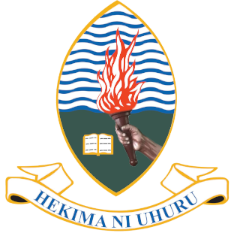Linux Server Administration Course
Objectives and contents
Linux Professional Institute Certification Level 1 (LPIC-1) is the first certification in the multi-level Linux professional certification program of the Linux Professional Institute (LPI). The LPIC-1 will validate the candidate's ability to perform maintenance tasks on the command line, install and configure a computer running Linux and configure basic networking. The LPIC-1 is designed to reflect current research and validate a candidate's proficiency in real-world system administration. The objectives are tied to real-world job skills, which we determine through job task analysis surveying during exam development.
Expected learning outcomes
The LPIC-1 course will make you competent in Linux servers administration in computer network environments as such network servers, email servers, software application servers, and files servers. Therefore, the course takes ten (10) days and it covers the following contents:
| Day 1: Linux Commands |
| (i) Command line File explorer (pwd, ls, cd, mkdir, rm, rmdir) |
| (ii) Reading file contents (cat) |
| (iii) Command output management (grep, less, |) |
| (iv) Copying and moving files (mv, cp, rsync) |
| (v) File compression (zip, gunzip, tar) |
| (vi) Getting help, Part 1(man pages) |
| Day 2: Linux Command lineText Editors |
| (i) Command line Text editor (nano) |
| (ii) Links browser |
| (iii) Getting help, Part 1(man pages) |
| Day 3: Linux Server Administration Commands |
| (i) Users management |
| (ii) Root privileges (sudo, su, /etc/sudoers) |
| (iii) Managing date and time |
| (iv) User & group management, Part 1 (adduser, addgroup, passwd) |
| (v) User & group management, Part 2 (passwd, userdel, groupdel) |
| (iv) Installing programs and understanding dependencies (apt-get, do-release-upgrade) |
| Day 4: Linux Server Network Configuration |
| (i) Managing network (ifconfig, ifup, ifdown, /etc/network/interfaces) |
| (ii) Server security, Part 1 (File permissions (ls –l, chmod, chown, chgrp) |
| (iii) Managing the filesystem, Part 1 (df, fdisk, parted, mkfs) |
| (iv) Managing the filesystem, Part 2 (blkid, mount, umount, /etc/fstab) |
| Day 5: Linux Webserver Installation (LAMP) |
| (i) Installing LAMP Server (Linux Apache, MySQL and PHP) |
| (ii) Webserver configuration (Documentroot, php.ini, my.ini) |
| (iii) Database Linux Commands (MySQL) |
| Day 6: Linux Mail and File Server Installation |
| (i) Creating fileserver (Samba) |
| (ii) Creating mail server (sendmail) |
| (iii) Creating domains SSL Certificates (letsencrypt) |
| (iv) Server backups and restore, Part 1 (MySQL Backups) |
| Day 7: Linux Shell Scripts |
| (i) Shell scripts |
| (ii) Automating server tasks (cron jobs) |
| (iii) Server backups, Part 2 (rsync, scp) |
| Day 8: Linux Server remote connections |
| (i) Remote connecting (ssh) |
| (ii) Process Management (ps, top, fg, kill) |
| (iii) Software repository access (git & GitHub) |
| Day 9: Automating server tasks |
| (i) Server security, Part 3 (ufw) |
| (ii) Server security, Part 1 (fail2ban) |
| (iii) Linux Virtual Hosting |
| Day 10: Installing Linux on Window |
| (i) Installing Linux terminal on windows |
| (ii) Windows remote connection to Linux Server (ssh) |
| (iii) Using WinSCP for Windows |
Career prospects
The course equips you with the necessary technical skills to become a Certified Linux Professional Administrator-Level 1 by the Linux Professional Institute (LPI).
Entry Requirements
To become an LPIC-1 certified a candidate must be able to:
- (1) Understand the architecture of a Linux system;
- (2) Install and maintain a Linux workstation, including X11, and setup it up as a network client;
- (3) Work at the Linux command line, including common GNU and Unix commands;
- (4) Handle files and access permissions as well as system security; and
- (5) Perform easy maintenance tasks: help users, add users to a larger system, backup and restore, shutdown and reboot.
Fee Structure
COURSE DURATION
The LPIC-1 training duration is conducted for two (2) weeks (a total of 10 days) and each day involves four (4) hours of training.
FEES
The training fee is Tanzania Shilling One Million and Five Hundred Thousand (TZS 1,500,000). The course fee is paid in one installment before the start of the training.
